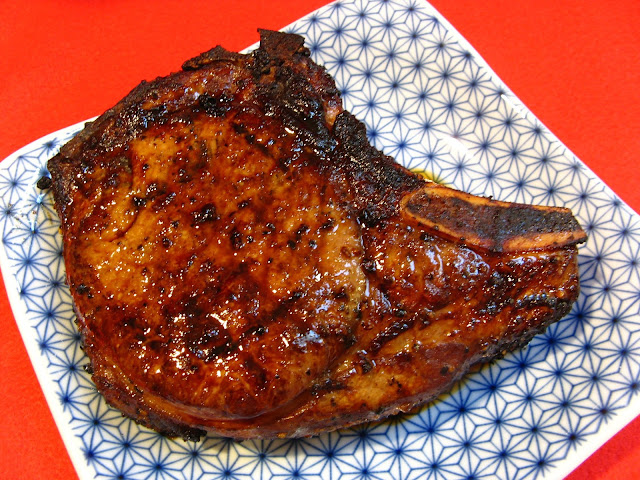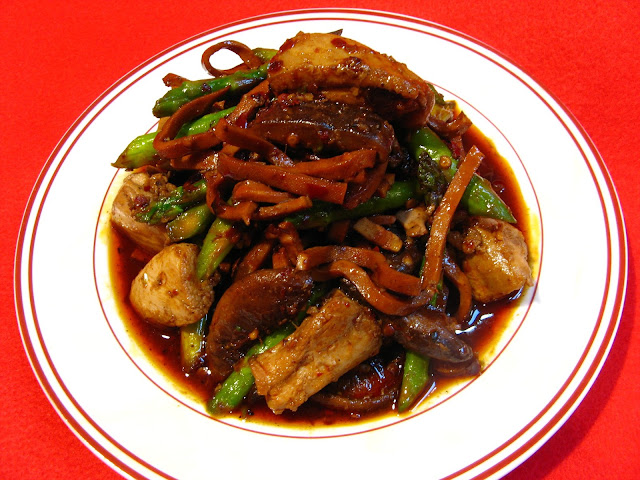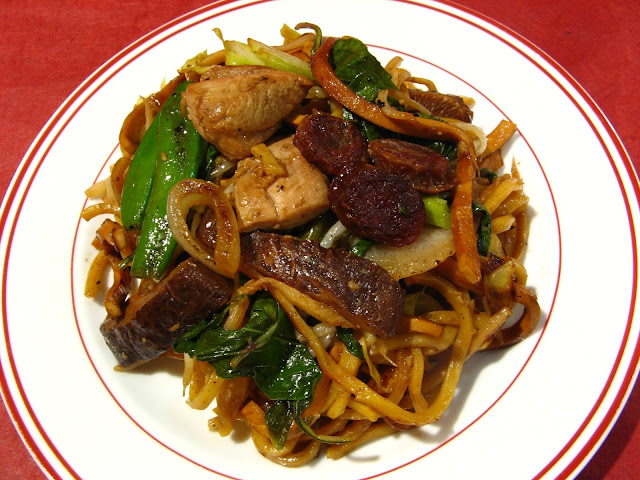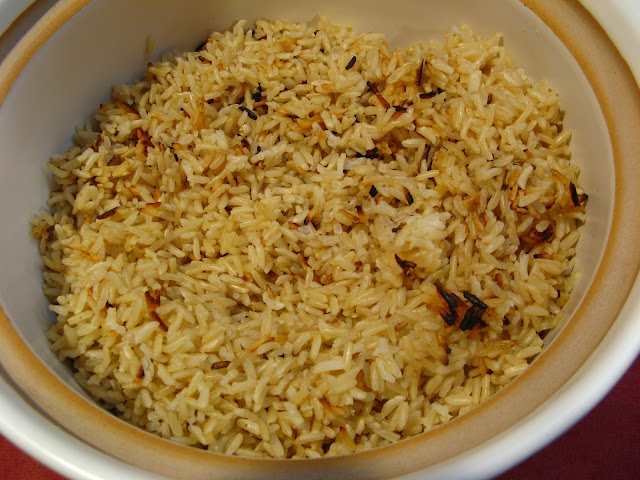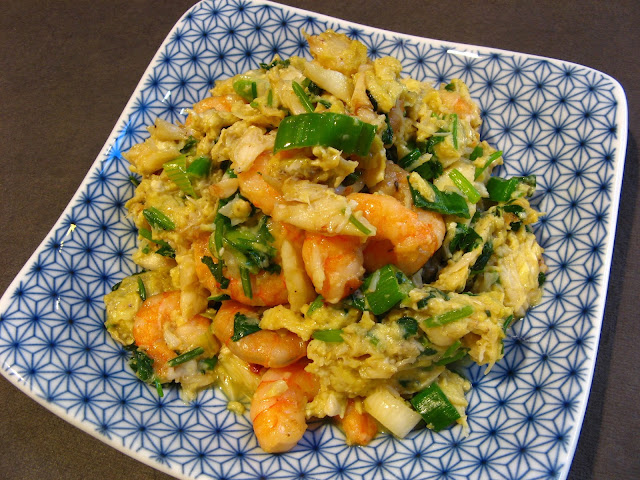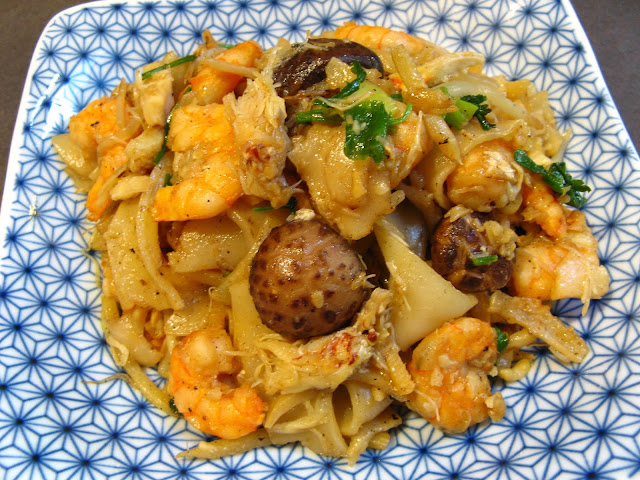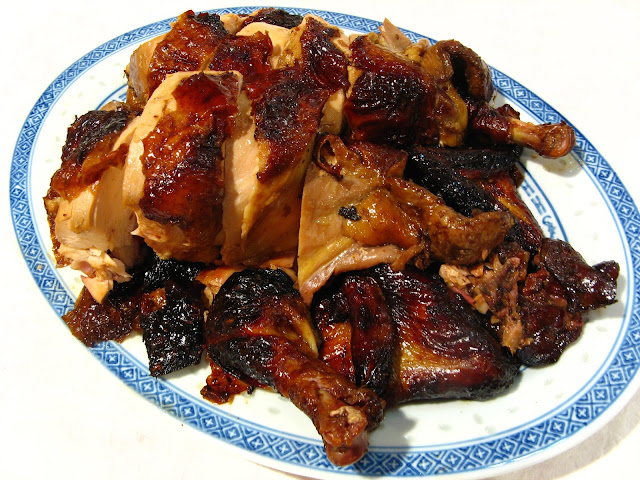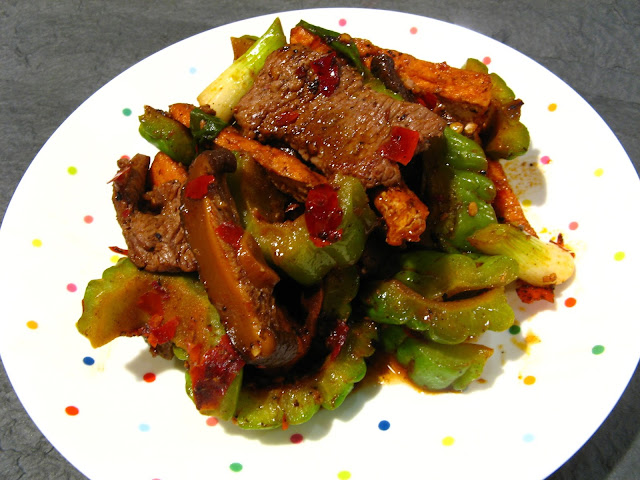This recipe for pork rib chops uses hard root beer in a soy
sauce marinade. You can of course use regular root beer in place of the hard root
beer; just use whatever’s available. The marinade is discarded and freshly
ground black pepper is used to coat the pork before grilling.
Enjoy!
Ingredients
|
2-4
|
2-4
|
Pork rib eye chops (豬排,
zyu1 paai4), about 1 lb. (500 g.) each
|
|
½ in.
|
15 mm.
|
Knob of ginger
(薑, goeng1), crushed in a garlic
press
|
|
4 cloves
|
4 cloves
|
Garlic (蒜, syun3), crushed in a garlic press
|
|
12 oz.
|
355 ml.
|
One bottle hard root beer (根汁汽水酒, gan1
zap1 hei3 seoi2 zau2)
|
|
½ cup
|
125 ml.
|
Soy sauce (豉油, si6
jau4)
|
|
½ tsp.
|
2.5 ml.
|
Ground white pepper (白胡椒,
baak6 wu4 ziu1)
|
|
1 Tbs.
|
15 ml.
|
Sesame oil (麻油, maa4
jau4)
|
|
|
|
|
|
|
|
Freshly ground black pepper (黑椒, hak1 ziu1) to coat the pork
|
Equipment
|
|
|
Garlic press
|
|
4 qt.
|
3.8 L.
|
Covered bowl
|
|
|
|
Tongs and an oil coated paper towel
|
|
22.5 in.
|
57 cm.
|
Covered charcoal or gas grill (or larger)
|
Instructions
- Use pork chops at least 1-inch (2.5 cm.) thick – the thicker the better. Marinate the pork in a covered container for at least one hour or overnight in the refrigerator with the ginger and garlic crushed in a garlic press, hard root beer, soy sauce, ground white pepper, and sesame oil. If marinating the pork overnight, take it out of the refrigerator at least one hour before cooking.
- Discard the marinade and remove as much liquid from the surface of the pork (a paper towel to blot the pork chops works well). Coat the pork surfaces with freshly ground black pepper.
- Prepare the charcoal or gas grill for indirect cooking following the manufacturer’s instructions. Light the charcoal or preheat the gas grill accordingly. Soak the smoking wood (pecan, oak, or any other wood can be used) for one hour if desired. I use dry and not soaked wood.
- If using a charcoal grill, arrange the lighted coals on one half of the grill. The side of the grill with the coals (the “hot” side) will be used to grill the pork and the side without the coals (the “cool” side) will be used to pre-heat and smoke the pork. For a gas grill, follow the manufacturer’s instructions as to which burners to leave on for indirect cooking. Clean the grill grate and then, using tongs and a paper towel coated with oil, lubricate the grate to prevent the pork from sticking. Put the smoking wood onto the coals or as per the instructions for the gas grill.
- Place the pork on the cool side of the covered grill for 3-5 minutes. Uncover the grill, turn the pork over, and cook covered for another 3-5 minutes.
- Uncover the grill and move the pork to the hot side of the grill. Grill the pork uncovered for 2-4 minutes before rotating 90⁰ to produce the grill marks, and grill for another 2-4 minutes. Turn the pork over and repeat the process to produce the grill marks on the other side.
- Remove the pork from the grill and allow to rest for 5 minutes before serving. Be careful not to overcook the pork. The thickness of the pork, the temperature of your fire, and previous experience with your grill will determine the total cooking time for the pork.
